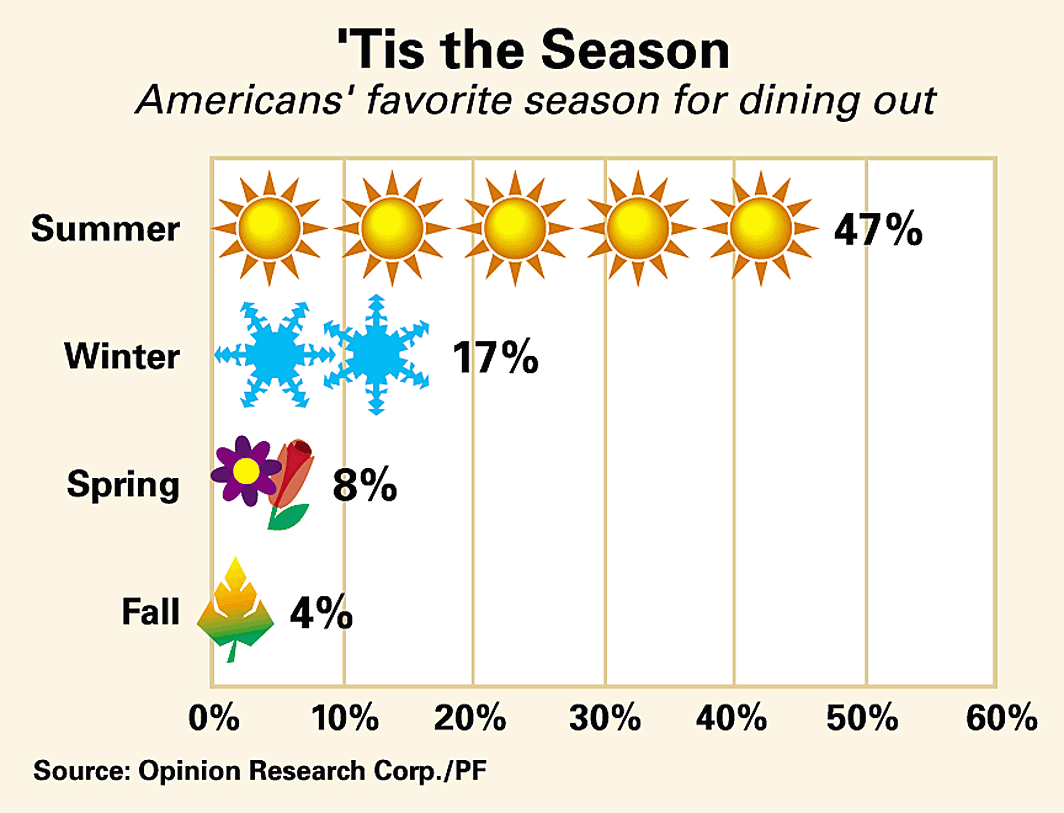The Last Bite

Dining Out = Pigging Out?
A recent study lays much of the blame for overweight children on the foodservice industry. Though eating out may provide a quick and easy way to share a family meal, the report says, these meals may contribute to the burgeoning numbers of overweight and obese children in the United States.The study, published in the August Journal of the American Dietetic Association, surveyed more than 800 children and adolescents aged 7 to 17. Restaurant meals accounted for only 6% of the meals eaten but contained about 55% more calories than the average meal eaten at home. Furthering the problem, meals from restaurants contained more total fat and saturated fat than those in the home.
In an attempt to explain the findings, Christine Zoumas-Morse from the University of California at San Diego said, “The perception of eating in a restaurant as being a 'special occasion' may encourage parents or children to make exceptions that they would not make in the home.”
Meals eaten at work, school, daycare or at a friend's home contained roughly the same number of calories as meals consumed at home. Zoumas-Morse believes the findings indicate that nutrition education programs should target restaurant dining and encourage healthier food choices when dining out, as these actions would help stem the rising tide of weight problems among American children.
Overall, young people consumed 31% of calories from fat and 11% of calories from saturated fat, a slight increase over recommendations of no more than 30% and 10%, respectively. The children ate more of both when dining in a restaurant.

Growing Organic
A new national survey by Walnut Acres found some 70% of consumers are concerned about the safety of their food. The study, entitled “Walnut Acres Certified Organic Future,” reported that the majority of consumers are concerned with bacterial contamination, the use of growth hormones and antibiotics, residues of synthetic pesticides and fertilizers, irradiation and genetic modification.A poll conducted by Roper Starch Worldwide Inc. found much the same level of concern regarding unknown ingredients in non-organic food and beverages. Their survey found 78% of those polled had no idea what they might be eating, while 71% said the idea of organic food was “appealing to them.”
The future looks bright for organic foods, according to the report, which found 40% of respondents expect organic foods to be a bigger part of their diet within one year. Some 50% expect organic foods to play a bigger role in their diet within the next five years.
More than 60% said they buy organic foods or beverages at least sometimes when they shop, but many cite a lack of availability at conventional supermarkets and grocery stores as one reason they do not buy organic items more regularly. Some 44% said organic foods are not available where they shop. Of those who never or rarely buy organic, 51% say a lack of selection or variety of organic foods and beverages are the reasons they do not purchase them more often.
Price was also cited as a key concern, with 68% of consumers who do not regularly buy organics identifying higher cost as the reason. Taste, for the most part, is less of a concern, with 69% believing organic foods and beverages taste about the same or better than non-organic products.
Looking for a reprint of this article?
From high-res PDFs to custom plaques, order your copy today!


